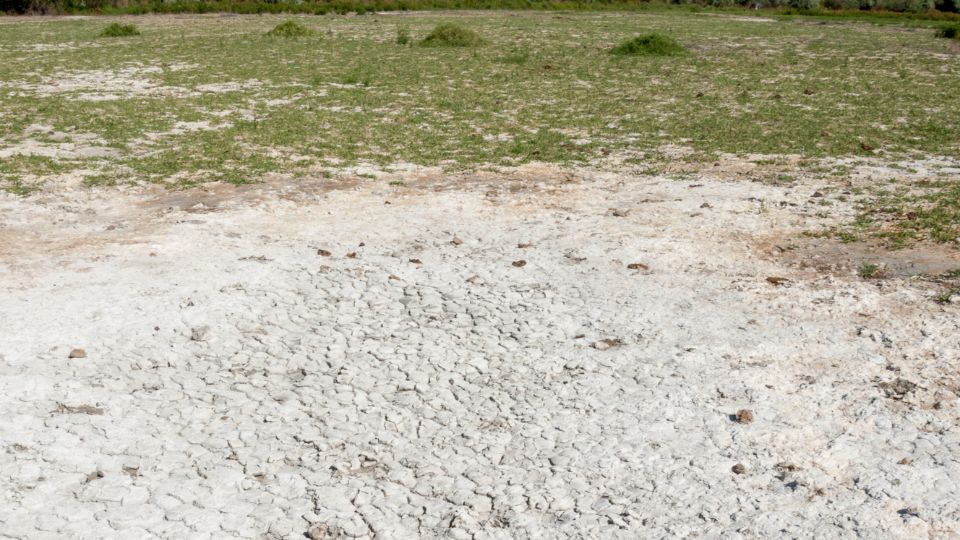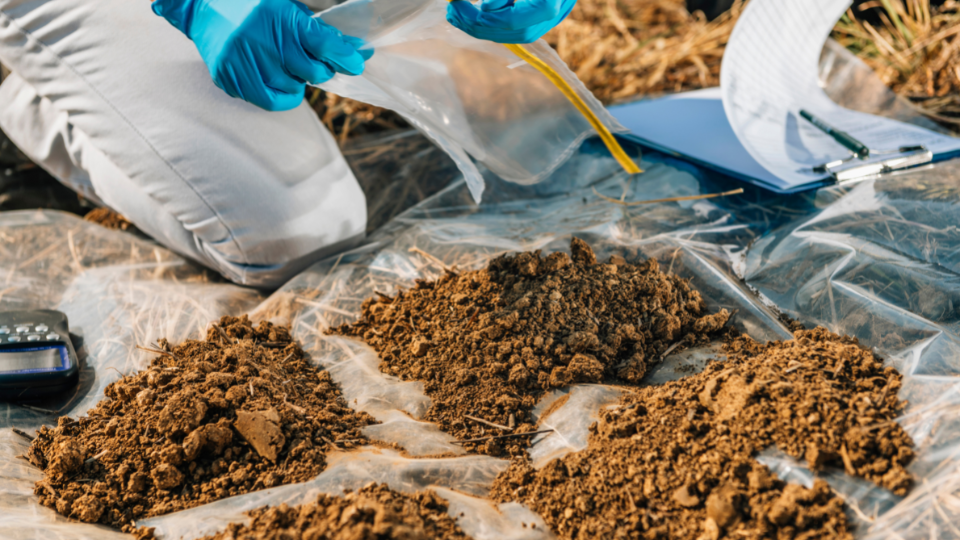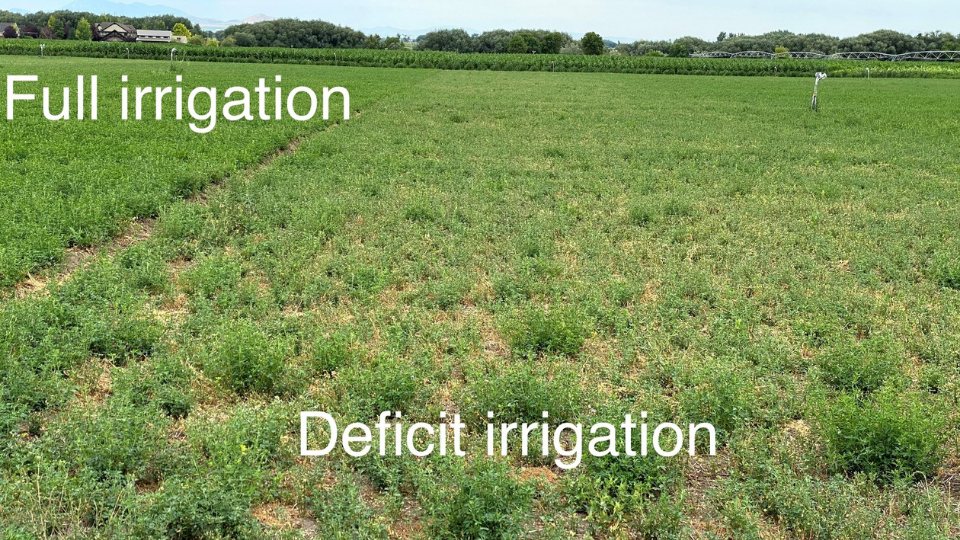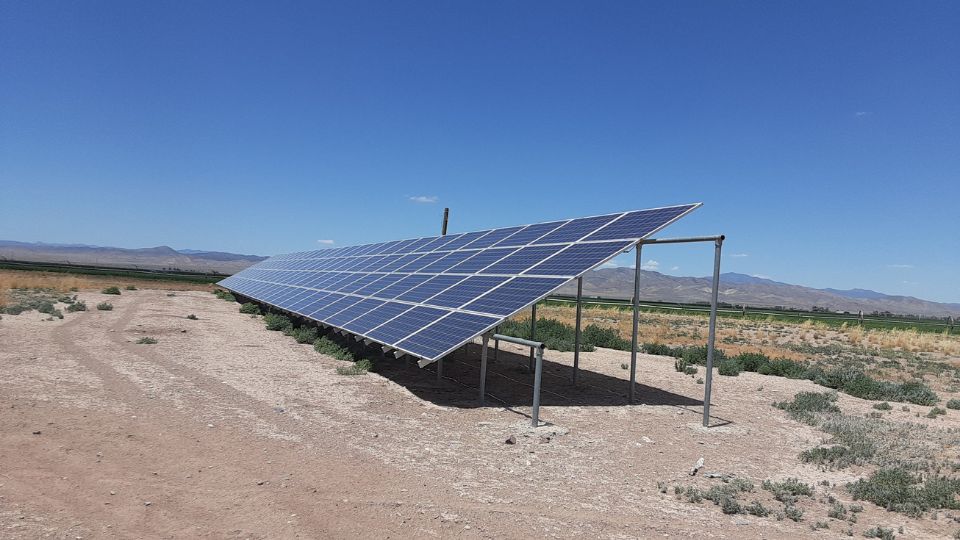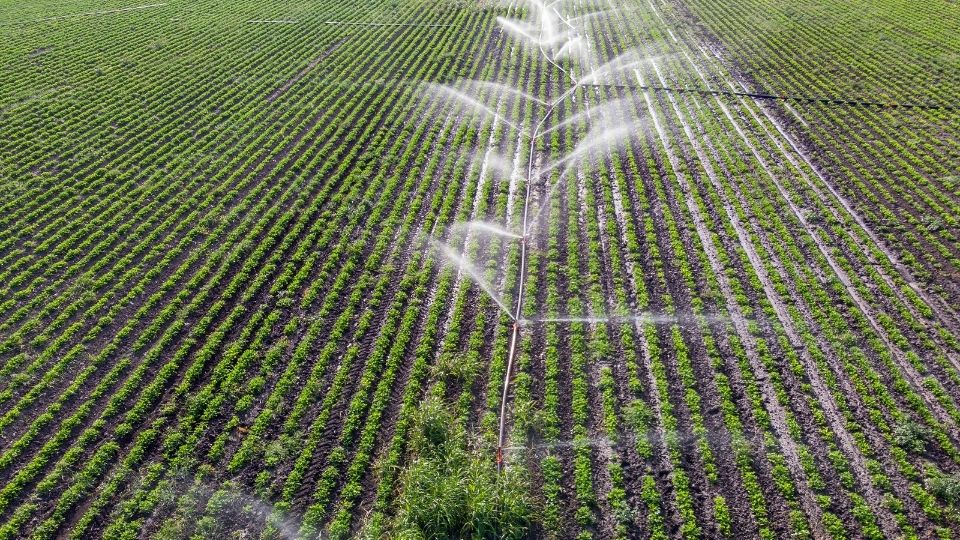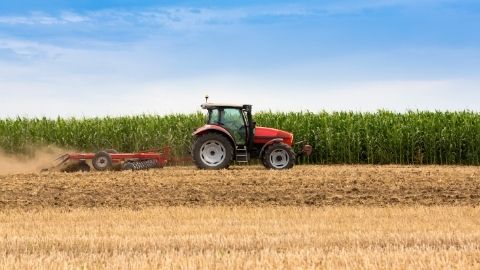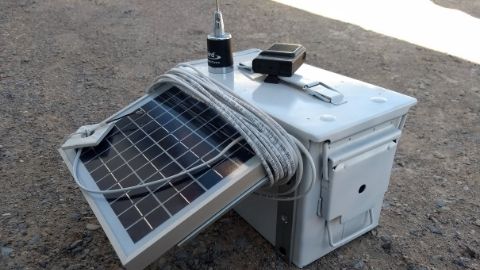Drought Tolerance Guide for Alfalfa in Utah

Overview
Crop variety selection is one of the most important choices on the farm. Crop genetics determine a significant portion of the yield potential and resource use efficiency. Crop types and genetics that use water more efficiently will become increasingly important as water becomes scarcer. Throughout Utah and the Western United States, water availability is decreasing due to various factors, including reduced snowpack and rapid urban growth. Alfalfa, other hay, small grains, and corn are grown on more acres than any other crops in Utah and much of the Intermountain West. These crops all have varieties, hybrids, and cultivars with the potential for more efficient water use while mitigating yield loss. Navigating these options and understanding various mechanisms and effectiveness can be a challenge. This guide will address some of the primary mechanisms, options, and effectiveness of crop genetics for improved water use efficiency.
Highlights
- In four Utah trials, an alfalfa variety bred for greater drought tolerance (Ladak II) has not consistently yielded better than conventional varieties under full irrigation or drought stress conditions during the first two years of alfalfa production.
- Crop genetics for drought tolerance have shown few water-saving benefits in Utah and should be considered with caution until more research confirms their profitability.
What Is Water Use Efficiency?
As water is a limitation in crop production, the need for crops to use every applied and natural (i.e., precipitation) unit of water is a high priority. One definition of crop water use efficiency (WUE) is the biomass or grain yield produced per unit of the total water used by the crop. It is calculated as WUE = Y/ET, where Y is the crop yield, either in total harvestable biomass or marketed yield, and ET is the combined water evaporation from the soil surface and water transpired by plants (Hatfield et al., 2001).
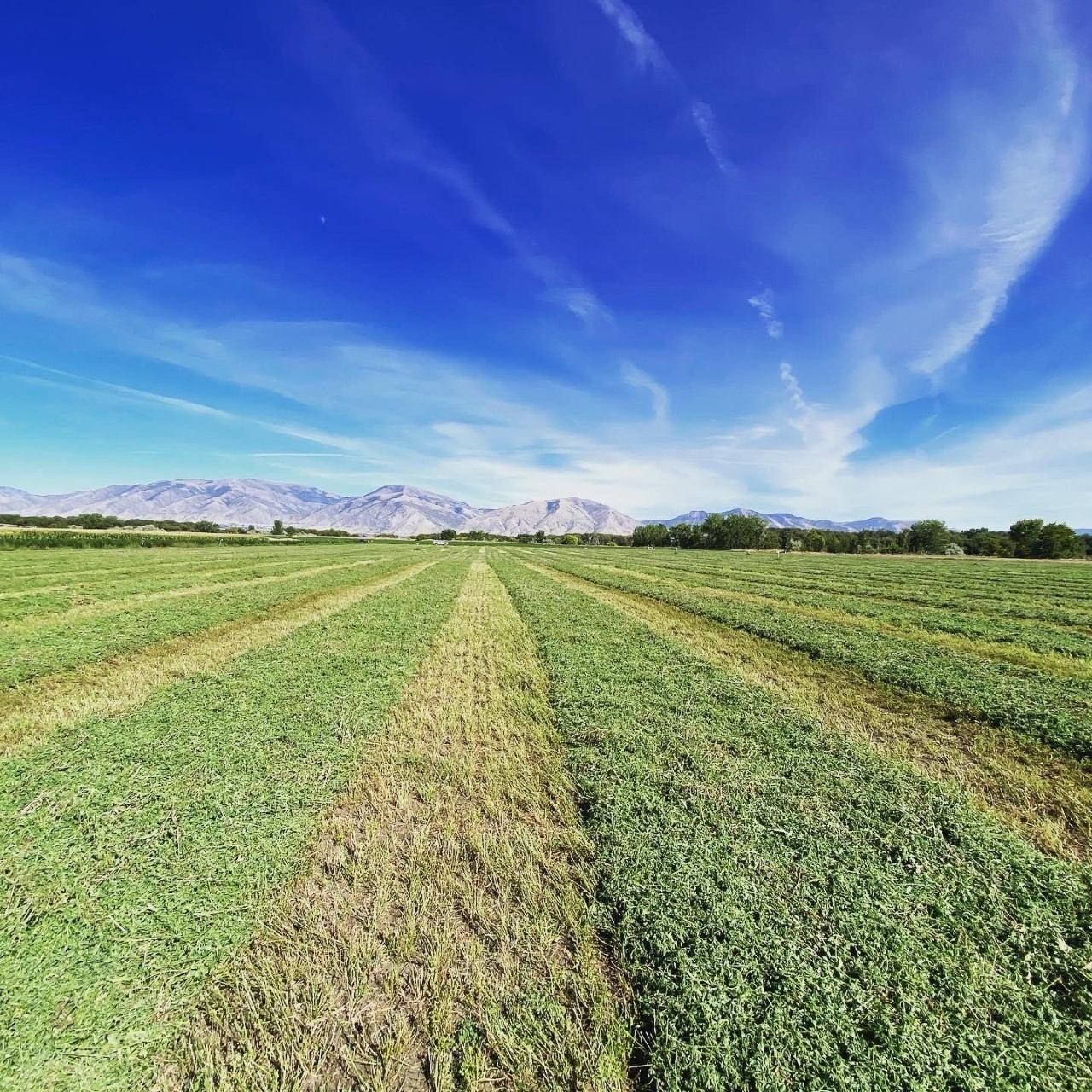
Water use efficiency is influenced by many factors, including soil and climate conditions. Crop type, management, and genetics also heavily influence WUE. Although WUE can vary widely, commonly reported values for major grain crops range from about 275 pounds of grain per acre inch of water for corn to 500 pounds of grain per acre inch of water for wheat (Putnam et al., 2001; Sadras & Angus, 2006). Alfalfa is about 300 pounds of biomass per acre inch of water. Silage corn and small grain forages have among the highest reported WUE. Silage corn has WUE of about 910 pounds per acre inch, and wheat forage has a value of about 700 pounds of dry matter per acre inch (Nilahyane & Islam, 2018; Marsalis, 2018).
Another factor to consider when evaluating efficiency is the harvest index. The harvest index is the percentage of the above-ground biomass harvested (Putnam et al., 2001). Because the complete leaf and stem are collected, alfalfa has a harvest index of 100. This is compared to grain corn with a harvest index of 50 or wheat with an index of 45. This increases the efficiency of alfalfa because all water used in the above-ground biomass is harvested compared to grain production, where half the biomass is unharvested. For this reason, silage corn and forage grains also have a higher harvest index and WUE. Several ongoing genetic and management efforts exist to improve the water use efficiencies of these crops.
Alfalfa is grown and harvested on more acres than any other crop in Utah and other western states. The crop has natural drought-tolerant characteristics due to deep roots and the ability to induce drought dormancy until water returns to adequate levels. There are no genetically modified varieties for drought-tolerant traits currently available on the market, unlike some other crops. Instead, varieties bred or selected for their enhanced drought tolerance are available. Further, some varieties have also been bred for dryland settings with low precipitation (12–18 inches annual precipitation) and no irrigation. Four drought-tolerant traits desired by breeders are the (1) root system's depth and size and (2) the stomata (leaf pores) density per leaf (Quan et al., 2015), as well as (3) plant height and (4) leaf-to-stem ratio (Ray et al., 1999).
Variety Selection
Many alfalfa varieties are rated for drought dormancy, fall dormancy, and/or winter dormancy. When selecting a variety, drought tolerance dormancy should not be confused with fall or winter dormancy ratings. Following is a description of each rating:
- Drought dormancy is referred to as summer dormancy in some cases as it is related to dehydration tolerance. During prolonged periods of soil moisture depletion, alfalfa will enter into dormancy. The plant can limit above-ground growth while storing energy reserves in the root system to ensure recovery when water becomes available (Sheaffer et al., 1998; Orloff et al., 2015). This feature allows alfalfa to survive without irrigation for extended periods.
- Fall dormancy is a rating of the degree of fall alfalfa growth as a response to temperature and day length. It is determined by clipping alfalfa about 25 to 30 days before a killing frost and measuring the height of regrowth near frost. Lower dormancy ratings exhibit more fall growth, while higher dormancy ratings indicate less fall growth (Davison et al., 2016). These ratings are indices assigned by comparing the height of fall growth with standard check varieties. They are tested in multiple locations and years to accurately estimate dormancy response across different environments. In some cases, a grower may use a higher dormancy rating to save water but generally, this sacrifices growth and makes a shorter growing season.
- Winter dormancy is also referred to as winter hardiness or winter survival. This dormancy is defined as the ability to survive through the winter. It is achieved either by developing a powerful frost tolerance ability or limiting the life cycle to the short summer season.
The two main dormancy ratings, fall and winter, are sometimes used interchangeably. Some varieties with low fall dormancy ratings begin to grow sooner in the spring, resulting in the uptake of early rain and earlier regrowth compared to other varieties with higher dormancy ratings (Undersander, 2015). Because it is hard to determine the differences in drought dormancy in varieties, it is not given in many variety rating reports but can often be obtained from the seed producer. In Utah, fall dormancy ratings of 3 to 5 are used most often.
Drought Variety Trials
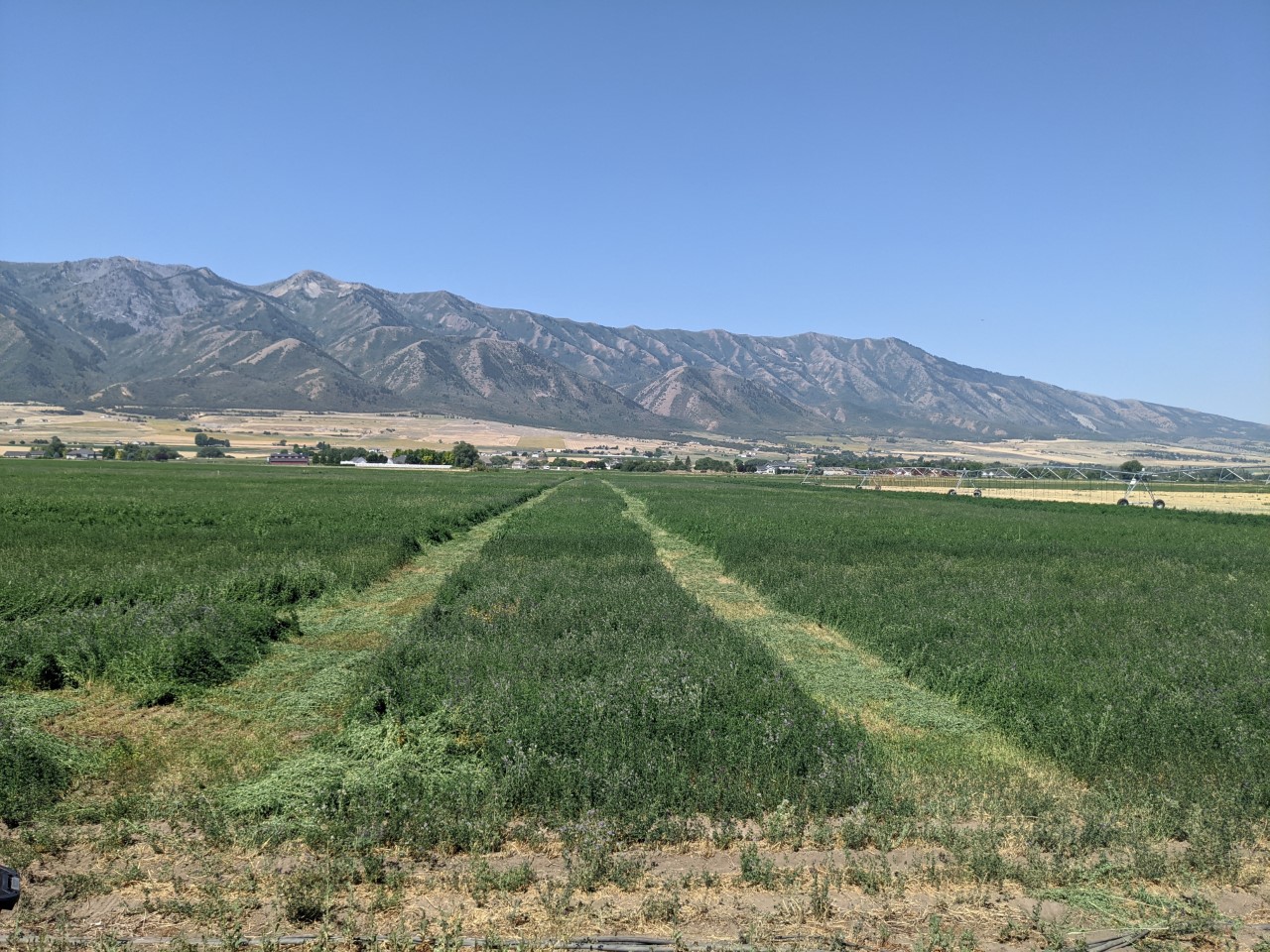
Three long-term water optimization trials were established in Utah: Logan in 2019, Vernal in 2020, and Cedar City in 2021. Ladak II, a drought-tolerant variety, was compared to conventional varieties common to each of the three areas. Both varieties at each site were tested under differing drought levels. Treatments were replicated three times at each of the three sites. Alfalfa yield and forage quality were measured on the establishment and first-year production at each site
The conventional varieties used were Nexgrow 6306Q at $4.56 per pound in Logan, WL319HQ at $4.26 per pound in Vernal, and IFA414 at $2.77 in Cedar City. At $3.85 per pound, the Ladak II variety was about $0.40 more per pound than a local brand and approximately $0.40 to $0.71 less per pound than varieties from large seed companies.
In young alfalfa stands at our three trials, Ladak II has not yet shown any evidence of outperforming conventional alfalfa varieties in terms of yield under deficit or full irrigation. In Cedar City and Logan, conventional varieties were superior in yield to drought-tolerant genetics in the seeding year. In Vernal, the yields of the two varieties were the same in the seeding year. The only site with a full production year after establishment was Logan in 2021, with both the conventional and drought-tolerant variety yielding the same (Figures 1 and 2). Under deficit irrigation, Ladak II has not yet shown yield advantages over conventional varieties.
Although Ladak II has not shown evidence of improving yield, it has shown improved feed quality. Relative feed value (RFV) was improved in two-thirds of the alfalfa cuttings across sites and maintained the RFV value in the other third of cuttings. The average RFV across all cuttings was increased in both years at the Logan site and was similar to conventional varieties at the other two sites (Figure 3). Increased RFV has the potential to increase hay values. Ladak II outperformed the conventional varieties in half of the cases for relative feed quality (RFQ), and no differences were observed in the remaining half. Despite elevated feed value and quality in our study, the additional feed value would not have improved the market price of the alfalfa because it was already classified within the supreme category.
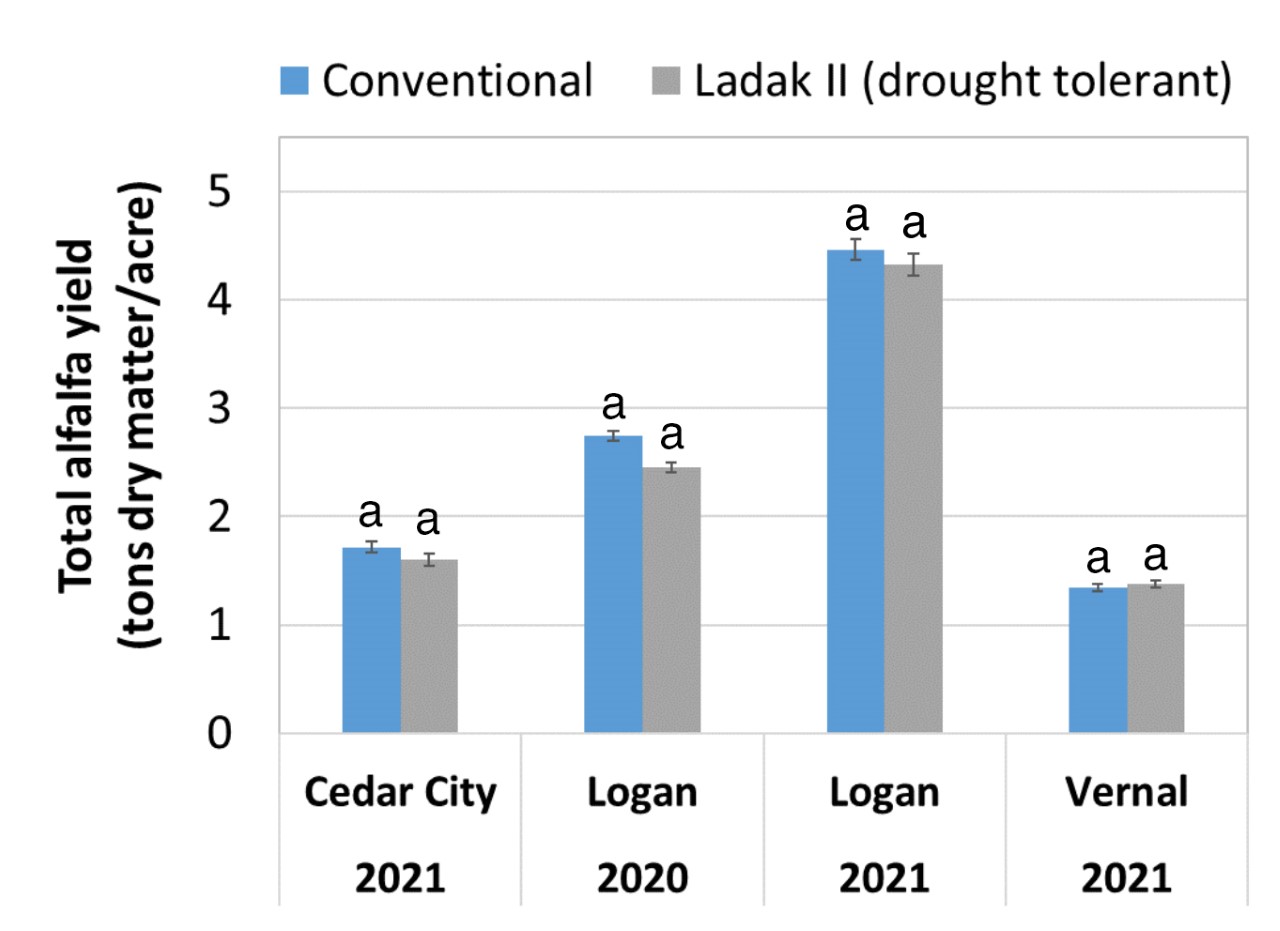

Summary
As drought becomes more common and intense in many regions, it is essential that options for drought tolerant crop varieties be explored and considered for growing areas affected by drought. Continued research is being conducted on the performance of drought tolerant varieties and hybrids, specifically in the West. Four Utah studies comparing conventional and drought tolerant varieties of alfalfa have shown little to no consistent increase in crop yield and performance of the drought-tolerant varieties in contrast to conventional varieties. Therefore, drought tolerant options should be considered carefully until further research can locally verify that the agronomic benefits outweigh the added cost.
References
- Davison, J., Solomon, J.,& Lawry, T. (2016). Alfalfa variety trial in western Nevada, initial results [Fact sheet]. University of Nevada Cooperative Extension. https://extension.unr.edu/publication.aspx?PubID=2162.
- Hatfield, J., Sauer, T., & Prueger, J. (2001). Managing soils to achieve greater water use efficiency: A review. Agronomy Journal, 93, 271–280. https://pubag.nal.usda.gov/catalog/13003.
- Orloff, S., Putnam, D., & Bali, K. (2015). Drought strategies for alfalfa [Fact sheet]. University of California, Agriculture and Natural Resources. https://anrcatalog.ucanr.edu/pdf/8522.pdf.
- Putnam, D., Russelle, M., Orloff, S., Kuhn, J., Fitzhugh, L., Godfrey, L., Kiess, A., & Long, R. (2001). Alfalfa, wildlife and the environment. California Alfalfa and Forage Association.
- Quan, W., Lui, X., Wang, H., & Chan, Z. (2016, January 12). Comparative physiological and transcriptional analyses of two contrasting drought tolerant alfalfa varieties. Frontiers in Plant Science. https://doi.org/10.3389/fpls.2015.01256.
- Undersander, D. (2015). What does fall dormancy really mean? Hay and Forage. https://hayandforage.com/article-607-what-does-fall-dormancy-of-alfalfa-really-mean-.html.
Published August 2022
Utah State University Extension
Peer-reviewed fact sheet
Authors
Matt Yost, Tina Sullivan, Dakota Boren, LuRee Johnson, Melanie Mills, Earl Creech, Boyd Kitchen, and Randall Violett
Related Research



















